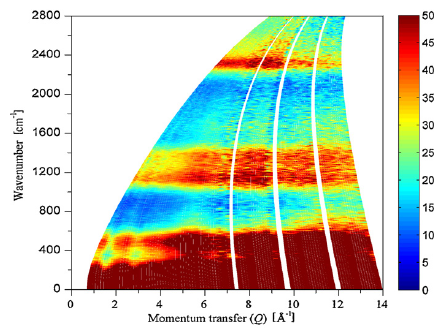-
YMn2Hx and RMn2−yFeyH6 (R = Y, Er) studied by Raman, infrared and inelastic neutron scattering spectroscopies
V. Paul-Boncour, S.F. Parker, H. Hagemann, S.M. Filipek, R. Wierzbicki and M. Latroche
Faraday Discussions, 151 (2011), p307-314


DOI:10.1039/C0FD00019A | unige:16757 | Abstract | Article HTML | Article PDF
YMn2 forms either interstitial YMn2Hx hydrides for x ≤ 4.5 or a complex YMn2H6 hydride when submitted to high hydrogen pressure. These compounds have been studied by inelastic neutron scattering (INS) in order to clarify the different modes of H vibration. The INS spectra of YMn2Hx hydrides are strongly dependent on the H content. YMn2H6 and YMn2D6 show broad bands, also observed by Raman and IR spectroscopy, assigned to H–Mn–H (or D) and Mn–H bending and stretching modes. Both ErMn2D6 and ErMn1.8Fe0.2D6 show, in addition to the H vibration mode, an intense band at 215 cm−1 which has been attributed to a magnetic excitation of Er3+ in view of its momentum transfer dependence.
